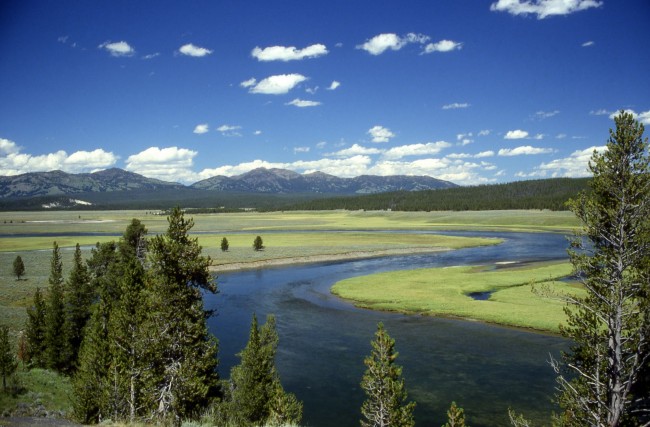
A sleeping supervolcano shook up Yellowstone National Park early this morning at 6:34 a.m. and registered a 4.8 magnitude earthquake, but geologists say the shake up should be of no concern. The tremor rattled the border between Wyoming and Nevada, nearly in the center of the historic park, near the Norris Geyser Basin. The last earthquake of this magnitude occurred thirty years ago in 1985.
- Yellowstone: Everything Is NORMAL December 2013: Utah’s Recently Discovered Killer Supervolcano
- A Dolphin Asks A Human For Help On A Night Dive Near Hawaii This Summer: Dog Cares For Abandoned Human Baby.
Scientists report that if the super volcano erupted it would decimate the United States with ash and affect the entire earth. Many people are concerned about seismic activity, suspecting the super volcano is due for an eruption.
Peter Cervelli of The US Geological Survey says this particular rattle is nothing to worry about and the caldera is not about to erupt.
The earthquake is interesting though because of the amount of time between the two strongest tremors. The data scientists will collect from the event will add to the insight of volcanoes and tectonics, he added. But this particular super volcano is still sleeping and should bring no concern.
Since the shake occurred at such an early morning hour, there were not very many visitors in attendance, and no injuries have been reported. A spokesman for the USGS Yellowstone Volcano Observatory has said the earthquake also resulted in no significant damage and is not expected to produce any volcanic activity, because the volcanic caldera is considered dormant.
Four aftershocks reverberated throughout the park overnight, with strengths ranging from 2.5 to 3.3 magnitudes, the last shake at 9:12 MDT. There were also two foreshocks, the first, a 2.0 at 12:23 a.m. and the second a 3.0 at 4:36 a.m. The main shock, which registered at 4.8, was reportedly felt throughout the national park and in the nearby towns of West Yellowstone and Gardiner, Montana.
A series of tremors and shakes were also felt in Oklahoma between Saturday night and Sunday morning, the latest in the series was recorded at 7:49 a.m. in the morning and registered at 3.2. The largest quake, registering a 4.5 magnitude, occurred about 12 miles north of Crescent, Oklahoma.

Earthquakes are common for this area. At least 25 have been recorded since the Yellowstone area became a national park. Records indicate anywhere from one to 20 rumbles a day, but they remain rather docile in magnitude. The immense Yellowstone Plateau has been watched and scrutinized closely by geologists in recent years, and there is evidence that the molten rock within the underground magma chamber is slowly expanding. Yellowstone has also been rising on an average of a few inches per year, which is three times higher than in 1923 when measurement recordings began.
The worst earthquake to ever hit Yellowstone was on August 17th, 1959. The Hebgen Lake Earthquake registered a 7.3-7.5 magnitude. It was a deadly event with 28 victims and causing $11 million in damages to timber and highways. Although geologists are convinced no other super volcano activity is suspected in Yellowstone, there are still many concerned citizens, especially after the earthquake activity Friday in Southern California. There is an updated log of earthquakes as they happen available from the U.S. Geology Survey for those interested.
By Stacy Feder
Related Articles:
- Rothschild’s Aliens: Aerial Hallucinogenics.
- Operation Blue Beam: Rothschild Aerial Hallucinogenics ~ A New York Fly By!
- Mein Fuhrer Obama Shuts Down NASA: For The Beginning Of Rothschild’s Blue Beam Project ~ Aerial Hallucinogenics!
- FEMA => Re-Education Camps For Corrupt Politicians: Mitigating The Buffoonery Of The World Gang Association’s Propaganda!
- Gore Defrauds America – Direct Evidence : Buys $8.875 Million Mansion On Shoreline Where Coastal Towns Are To Be Swallowed By Melting Ice Caps!

